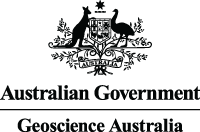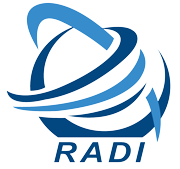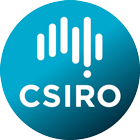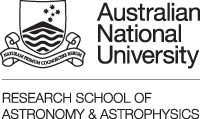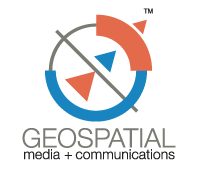FD-6: Remote Sensing with Reflected Global Navigation Satellite System (GNSS-R) Signals
James Garrison, Adriano Camps
Abstract:
Although originally designed for navigation, signals from the Global navigation satellite system (GNSS), ie., GPS, GLONASS, Galileo and COMPASS, reflect off of the Earth and ocean surface, where the effects of rough surface scattering change their properties. Several methods have been developed for inverting these effects to retrieve geophysical data, including ocean surface roughness (winds) and soil moisture. GNSS reflectometry (GNSS-R) methods enable the use of a small, passive, instruments, that can be deployed with significant cost savings, as compared to radiometers or scatterometers, on small satellites, light aircraft, and UAV's.
Extensive sets of airborne GNSS-R measurements have been collected over the past 15 years, during multiple experimental campaigns, including penetration of hurricanes with winds up to 60 m/s and flights over agricultural fields with calibrated soil moisture measurements. Fixed, tower-based, GNSS-R experiments have been conducted to make measurements of sea state, sea level, ice and snow, soil moisture, as well as inter-comparisons with microwave radiometry. Early research sets of satellite-based GNSS-R data were collected by the UK-DMC satellite, launched in 2003. A more comprehensive experiment is planned for Tech Demo Sat-1, scheduled for launch in early 2013. NASA has recently approved the CYGNSS Earth System Science mission to observe tropical storm development with high spatial and temporal resolution and ESA has initiated Phase A of the Passive Reflectometry and Interferometry System In-Orbit Demonstration (PARIS-IOD) project. With the launch of these satellite missions, the availability of spaceborne GNSS-R data, and the development of new applications from these measurements, is expected to increase significantly.
This all-day tutorial will summarize the current state of the art in physical modeling, signal processing and application of GNSS-R measurements from fixed, airborne and satellite-based platforms.
An outline of the tutorial follows:
- Introduction to the GNSS signal structure: Correlation properties of PRN codes; BPSK and BOC modulation;
- Models for the reflected GNSS (GNSS-R) signal: Geometric optics-based models for rough surface scattering, their limitations, and current attempts to improve upon them. Geometry of the bistatic radar problem. Second-order moments of the reflected signal waveform as a stochastic process.
- Geophysical model functions: Ocean height spectrum models (Elfouhaily), and the generation of filtered mean square slope. Models for the slope statistics (Cox and Munk) and reduction of these models to account for the L-band wavelength of GNSS-R signals. Surface reflection coefficients on land and water, and the relationship to soil moisture and ocean salinity.
- Retrieval of geophysical data through inversion of scattering models. Direct inversion of scattering models, to estimate surface roughness from delay-Doppler waveform measurements. Non-linear least squares approaches and their sensitivity. Recent results on full-PDF retrievals. Faster computational methods, including series approximations, waveform peak tracking, and matched filters.
- Power calibration of the reflected signal.
Biography:
James L Garrison has been a member of the faculty at Purdue University since 2000, where he is currently an Associate Professor in the School of Aeronautics and Astronautics, with a courtesy appointment in the School of Electrical and Computer Engineering. He was a founding member of the Executive Committee for the new Division of Environmental and Ecological Engineering at Purdue. From 1988 to 2000 he was employed by the National Aeronautics and Space Administration (NASA), first at the Langley Research Center in Hampton VA, and later at the Goddard Space Flight Center in Greenbelt MD. He earned a PhD from the University of Colorado at Boulder in 1997, while on graduate study leave from NASA. He also holds a BS from the Rensselaer Polytechnic Institute and an MS from Stanford University. He is the author or co-author of 24 journal articles and 44 conference proceedings. He holds 5 US Patents. He has received a number of awards, include a NASA New Investigator grant, an Institute of Navigation Early Achievement Award, and an invitation to the Keck Futures Initiative.
Adriano Camps (S'91-A'97-M'00-SM'03-F'11) was born in Barcelona, Spain, in 1969. He received the degree in telecommunications engineering and Ph.D. degree in telecommunications engineering from the Universitat Politècnica de Catalunya (UPC), Barcelona, Spain, in 1992 and 1996, respectively. In 1991 to 1992, he was at the ENS des Télécommunications de Bretagne, France, with an Erasmus Fellowship. Since 1993, he has been with the Electromagnetics and Photonics Engineering Group, Department of Signal Theory and Communications, UPC, where he was first Assistant Professor, Associate Professor in 1997, and Full Professor since 2007. In 1999, he was on sabbatical leave at the Microwave Remote Sensing Laboratory, of the University of Massachusetts, Amherst. Since 1993, he has been deeply involved in the European Space Agency SMOS Earth Explorer Mission, from the instrument and algorithmic points of view, performing field experiments, and more recently studying the use of GNSS-R techniques to perform the sea state correction needed to retrieve salinity from radiometric observations. His research interests are focused in microwave remote sensing, with special emphasis in microwave radiometry by aperture synthesis techniques and remote sensing using signals of opportunity (GNSS-R). He has published more than 110 papers in peer-reviewed journals, and more than 250 international conference presentations.


 IGARSS13
IGARSS13 @IGARSS2013
@IGARSS2013